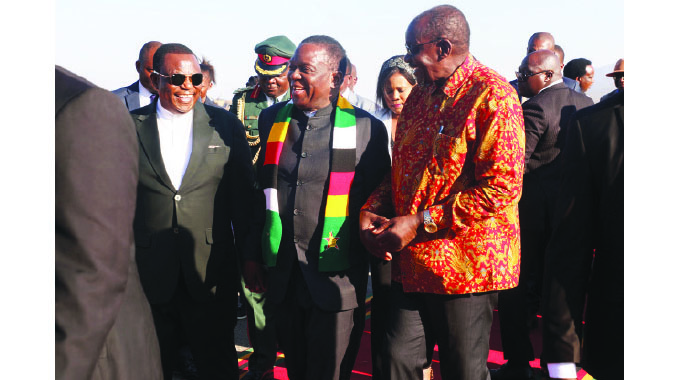Maize hectarage declines

Elita Chikwati Senior Reporter
The 2019/20 cropping season hectarage for maize has suffered a five percent decline to around 1,5 million hectares from the 1,6 million planted in the 2018/19 season, while the area under traditional grains increased significantly countrywide.
According to the Ministry of Lands, Agriculture, Water and Rural Resettlement’s first crop and livestock assessment report for 2019/2020 season, there was an increase in the area put under sorghum, pearl millet and finger millet.
The area put under rice also increased by 52 percent.
The report states that 1 549 324 hectares were put under maize, marking a decline from the 1 623 757 hectares that were put under the same crop during the 2018/19 season.
A total of 652 008 hectares were planted in November, 606 124 hectares in December and 291 192 hectares were planted in January.
About 106 520 hectares of maize were written off because of the dry spell.
The area put under sorghum increased by 52 percent from 201 065 hectares last season to 305 865 hectares this season, while pearl millet increased from 151 708 hectares to 166 429 hectares during this season.
Finger millet increased by 37 percent from 25 146ha to 34 353ha.
The report also shows that the area planted on cowpeas increased by 13 percent from 53 917 to 60 799 hectares during this season.
Government has been promoting production of traditional grains in all parts of the country as they perform better even under dry conditions.
To boost production, the Grain Marketing Board has been buying traditional grains at about the same price as maize.
Recently, Government announced a producer price of $12 865 per tonne for traditional grains, a price that is slightly higher than the $12 329 offered for maize.
According to the first crop and livestock assessment report, the 2019/20 season was marked by a delayed onset in the southern and south eastern parts of the country.
“In the south and south eastern parts of the country, including Chipinge south, most districts in Masvingo province, parts of Matabeleland South and parts of Midlands province, the season started in the first week of January,” notes the report. “This was 30-40 days after the normal onset of rains.
“Some districts such as Mwenezi, Chipinge south, Chiredzi, parts of Matabeleland North, Matabeleland South (Beitbridge, Matobo, Bulilima), and parts of Midlands (Mvuma, Gokwe South) had not received effective rainfall for planting as late as end of December 2019.
“The northern parts of the country covering Mashonaland West and Mashonaland East, Hurungwe, parts of Makonde, Mutoko, Murewa and Goromonzi received significant early rains in November and, therefore, have an early crop.”
Although most parts of the country had a normal start of the season, this was followed by prolonged dry spells, coupled with high temperatures.
During the 2019/20 season, Government, private sector and non-governmental organisations supported production through a number of input programmes.
Government conducted the crop and livestock assessment to ascertain the areas planted under major crops, assess availability, accessibility and usage of inputs.
It was also aimed at assessing the quality of rainfall, grazings and livestock condition, water supply, disease prevalence and control and overall prospects for the season.










Comments